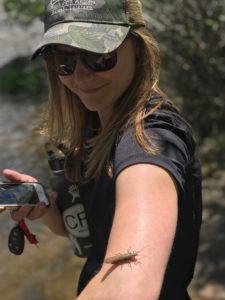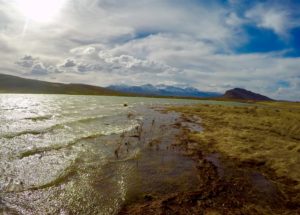Choosing the Right Fly Line
July 9, 2018
Like many specialty sports, fly fishing carries a mantra that fly shops are stuck-up which makes it tough for a consumer to enter a shop and ask a question. This sucks, we know it and strive hard not to be that way. We love helping our customers get dialed in and want them to learn something new every time they enter our store. This leads us to this week’s blog about how to choose the right fly line. This is a common problem for anglers and we want to help.
It used to be an easy decision but technology in manufacturing of both fly lines and fly rods has made this tougher and tougher. Not all rods are built with the same specs so there is variance between rods and rod companies and the same can be said for fly lines. Years ago the American Fly Fishing Trade Association (AFFTA) set up a system to grade fly lines by weight. This way a consumer could purchase a fly line by matching the weight of the line with the weight of the rod and you were good to go. However, with the advances in our sport companies are making rods lighter, faster and a heck of a lot more efficient. With these advances this system has gotten a little squirrely and now we need to pay more attention when purchasing a line.
When looking at the original AFFTA system, essentially the last 30 foot of every fly line is weighed. From here the line will be classified by size based on where it fell within the weight chart. For example: all 5 weight fly lines within the market will weigh around 140 grains. Because we use the weight of the fly line to load and cast the fly rod it’s very important that we get a fly line that is weighted properly for our fly rod.
This system is great and has been a good starting point but the problem is fly rod and fly line companies are making so many different models that it can be overwhelming for the general consumer. Below is a breakdown of the different fly lines available for trout and what to consider when choosing your next line…
WF– The Weight-Forward Taper. This is the “standard” taper for trout fishing. The general idea of a WF fly line is that the first 30 feet (casting end) of the fly line have all the bulk and weight followed by running line to the back of the line. This makes it better for casting longer distances and gives the manufactures more room when designing specialty style lines. In my opinion, this is the best way to go for an all-purpose fly line when fishing anywhere in the West.
DT– The double taper fly line is essentially a WF fly line at both ends of the line. This is great for shorter casts and fishing in close. It is used mostly by anglers fishing bamboo or slower fiberglass rods where they aren’t fishing very far. The major benefit of the DT fly line is that you can flip the line after you wear one side out and use it from the other side basically giving you two lines for the price of one.
Sinking Fly Lines– Sinking fly lines are used in many different applications. They are great for anglers looking to present a fly in the depths. These are used mostly by anglers fishing in large rivers or lakes.
There are three different style of sinking fly lines.
Sinking tip: These are fly lines that have a sinking head usually 5-15ft in length followed by thin running line. They are generally used by anglers fishing rivers from a boat and are casting streamers to the bank.
Intermediate: These are slow sinking fly lines that sink at a rate of 1 inch per second. These lines have the same sink rate throughout the entire line. These fly lines are used generally used by still-water anglers that want to count their fly line down to a specific depth before retrieving it.
Full Sinking: These fly lines get down quickly and are rated type 3, 5, 7 and 10. Essentially meaning they will sink 3, 5, 7 or 10 inches per second. These lines are generally used by still-water anglers but some anglers will use them in very fast or deep rivers.
All sinking fly lines are WF fly lines and have size ratings to make it easy for the consumer to choose the correct size. If you are fishing lakes or large rivers I highly recommend looking into a specified set-up equipped with a sinking line.
First you have to ask yourself; what am I using this fly rod for? Is it for a lake, a stream, an all-purpose set-up, dry flies, streamers or nymphing? Then talk with your local dealer about the different options that fall under that category. As a fishing guide, casting instructor, and avid angler I have more fly rods than I really need. I love casting and enjoy having different set-ups available for multiple styles of fishing. I have some rods that I overweight (for ex: 6wt line for 5 wt. rod) making it easier to turn over bigger flies in short quarters. I also have rods that I underweight, they are for my very slow rods that I don’t want to overload. There aren’t any rules when choosing a line and the more time you spend casting the better your selection will get. One thing is for sure, all rods have a sweet spot and choosing the correct line matched with your casting style will make your rod very happy, and possibly get you a few more fish.





















